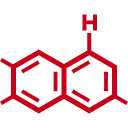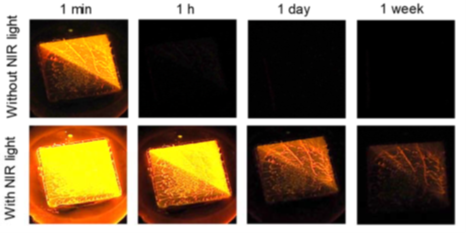Organic Photostimulated Luminescence (No. 0183)
|
|
<< Back to all technologies |
Summary
Photostimulated luminescence (PSL), which is the release of stored energy by stimulation by visible or near infrared light, has attracted considerable interest in the fields of medical and data storage technologies, but this phenomenon has mostly been limited to insoluble inorganic materials. The problem is that these inorganic materials require environmentally unfriendly rare earth materials and temperatures higher than 1,000 degrees Celsius during fabrication. Here we present a promising PSL system developed by a group of researchers led by Prof. Ryota Kabe. The system is based on purely organic materials composed of electron donor, acceptor, and trap/emitter molecules which realizes an environmentally friendly and robust solution for PSL applications.
Applications
- Optical Data Storage
- Bioimaging
- Dosimetric Device
Advantages
- No rare metal materials
- Excitation/Stimulation/Emission wavelength tunability
- Ease of fabrication – low temperature/flexible/soluble
Technology
This technology provides a PSL system from purely organic films composed of electron donor, acceptor, and trap/emitter molecules. In these PSL films, charges are accumulated as radical ions by ultraviolet light irradiation and then extracted by near infrared light irradiation to produce visible light. These PSL films are capable of multiple cycles (>10 times) of photostimulated luminescence, which was still observable from films left in the dark at room temperature for one week after excitation. Also, the emission color can be varied by changing the trap/emitter molecules. This technology will provide new prospects for innovative energy storage devices.
Media Coverage and Presentations
CONTACT FOR MORE INFORMATION
![]() Graham Garner
Graham Garner
Technology Licensing Section
![]() tls@oist.jp
tls@oist.jp
![]() +81(0)98-966-8937
+81(0)98-966-8937







